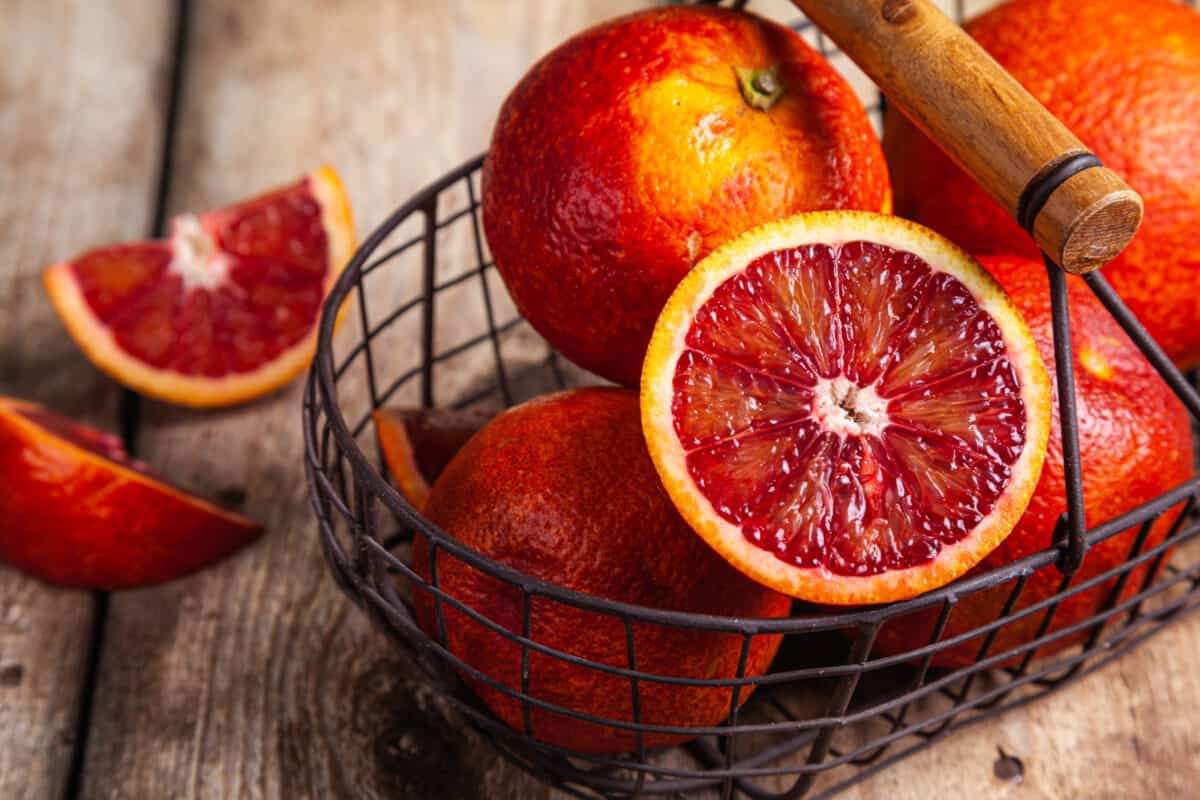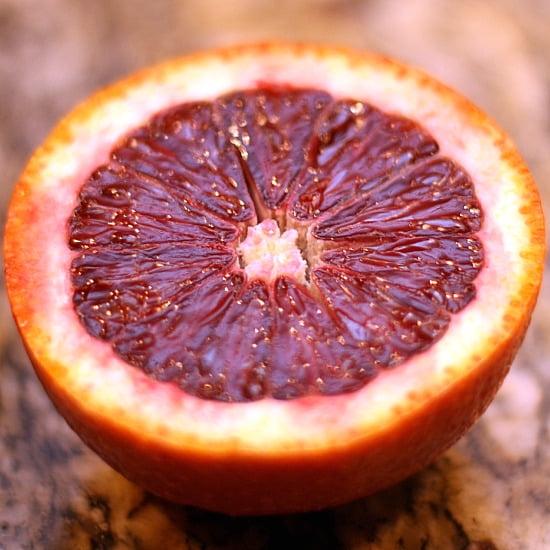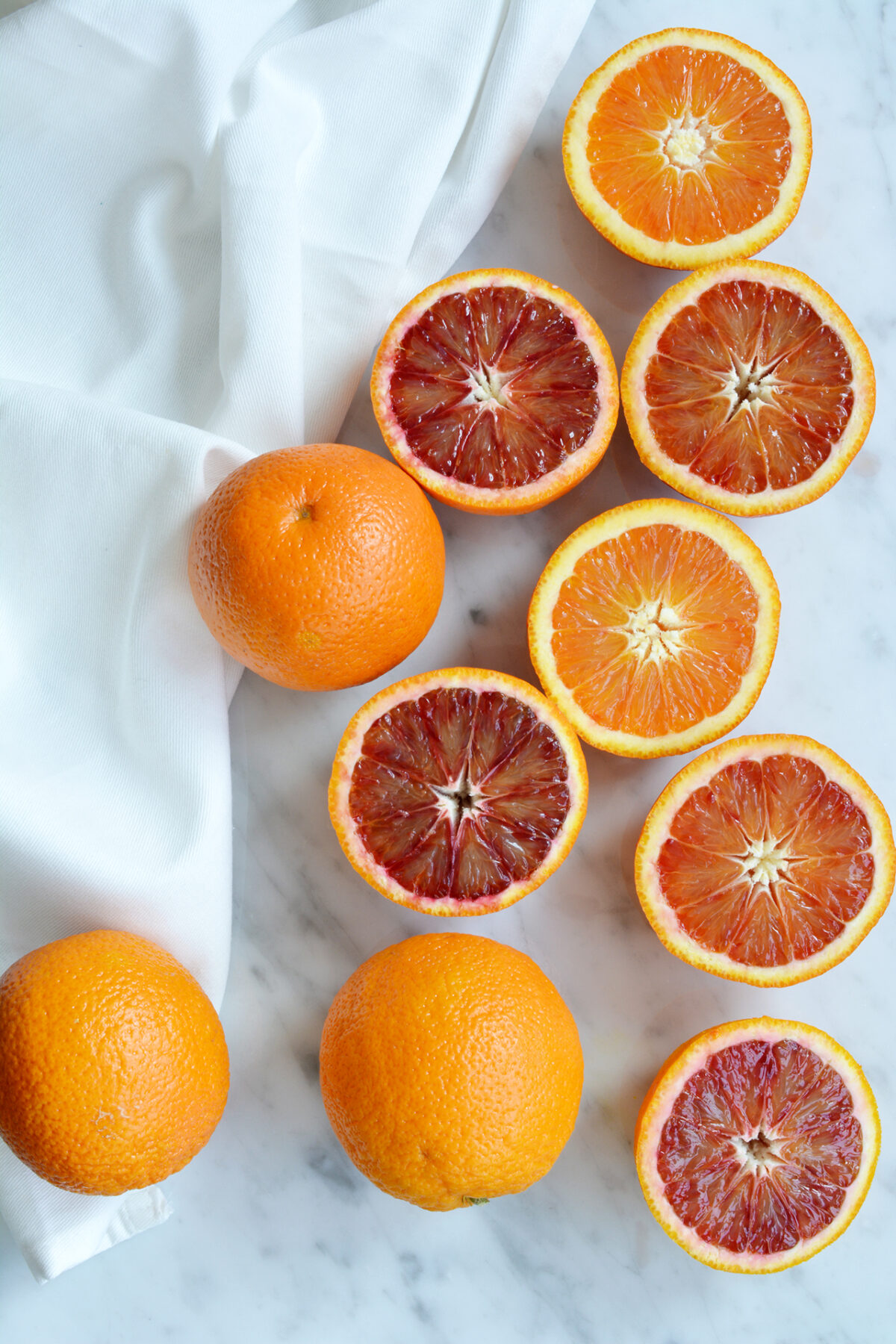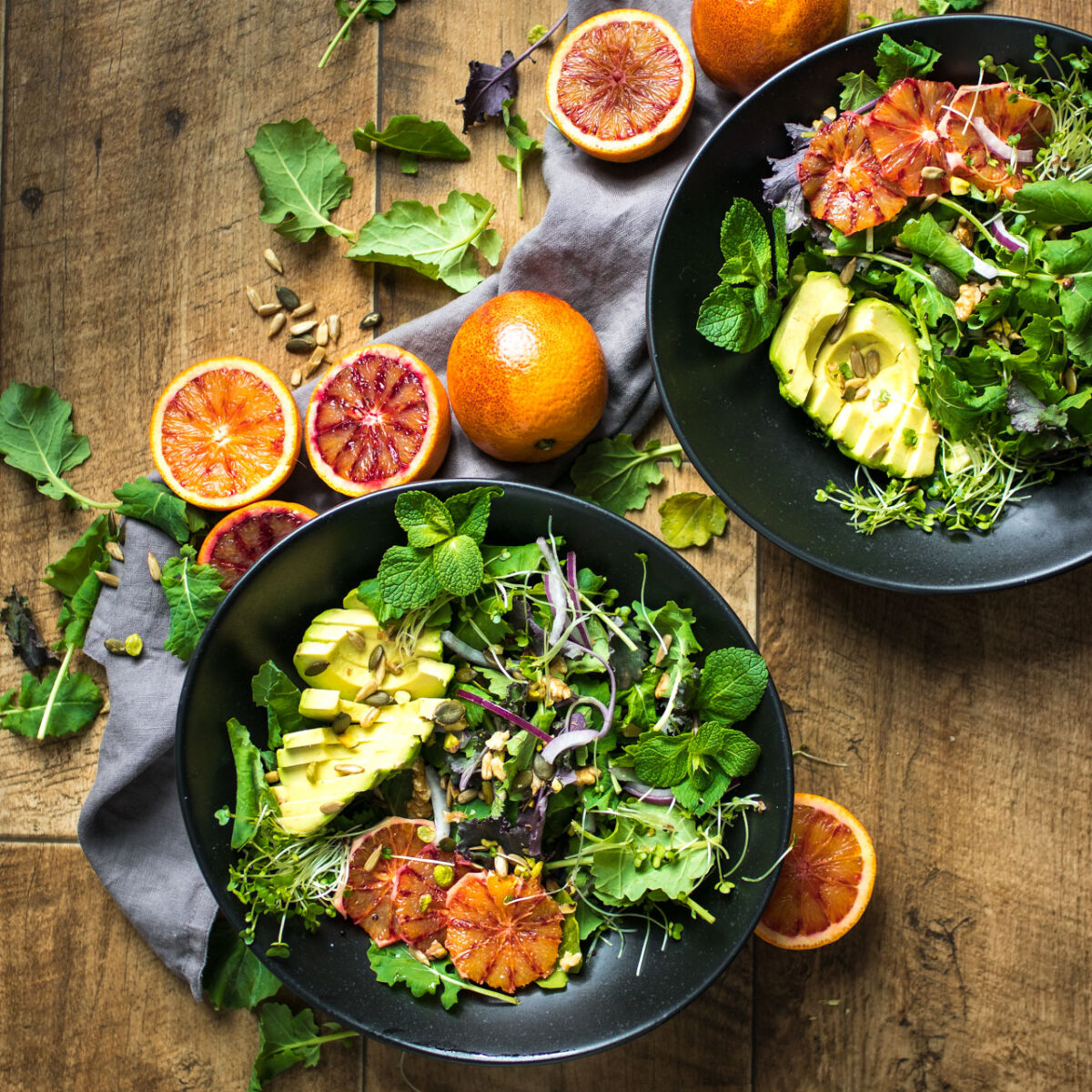Blood oranges have been a popular citrus fruit in the Mediterranean since they were first propagated in the 1700s. But this ruby orange has only recently become a sought-after variety in the States.

If you want to taste the subtle raspberry notes and sweeter flavor the blood orange has to offer, you need to get them while they’re in season. Below we’ll look at the best times to buy different varieties of blood oranges in the US and abroad.
Different Blood Orange Varieties and Their Typical Seasons
There are over 15 varieties of blood oranges cultivated around the world, with Moros, Taroccos, and Sanguinellis being the most popular in the USA. In general, blood oranges are in season from October to May, but this varies greatly based on the variety in question.
Moro Blood Orange
The Moro blood orange is the darkest of all these red citrus fruits. The flesh tends to be dark red to almost black, like a good Petite Sirah. The more often the oranges are exposed to cold temperatures during development, the darker the flesh.
These oranges are slightly smaller than a navel orange and can have orange or blushed skin. They have a distinct sweetness and a tart finish.
Moro blood oranges are the earliest to ripen. They are typically available at farmers’ markets from mid-December to late January.
Tarocco Blood Orange
The Taroccos blood orange is a medium-sized variety with very few, if any, seeds. The coloration on the inside varies widely based on the growing conditions and cultivator. Most have bright red flesh with streaks of orange throughout.
The first Taroccos to come to Florida from the Mediterranean were celebrated for their red rinds. Today, the typical Tarocco has an orange peel without any blush. The flavor is noticeably sweet with less tang and bitterness than other varieties.
Taroccos are in season from late December to February.
Sanguinelli Blood Orange
This blood orange variety was first cultivated in Spain. Of all the blood oranges on the market, it tends to have the most blush on the rind. This can vary from a pinkish hue to dark red, depending on how cold the oranges got during ripening.
The flesh inside Sanguinelli blood oranges is pigmented with deep striations of dark red and orange. While other varieties can vary greatly in how much red you’ll get, this one tends to be fairly consistent. The flavor is equal parts sweet, tart, and acidic.
Sanguinelli blood oranges are in season from late December to February.

Blood Orange Season in Different Parts of the World
In the USA, blood oranges are primarily grown in California and Florida. You can also find small orchards in Arizona and Texas. In all states, the primary blood orange season tends to run from December to February.
Blood oranges are also commonly cultivated in the Mediterranean where they were first discovered. Italy, Spain, and Malta have large blood orange industries. On this side of the world, the blood orange season is much longer, from December to April, largely due to the number of varieties available.
Blood oranges can also be found in the southern hemisphere. They are cultivated in Australia, South Africa, and Brazil. On this end of the globe, they are typically in season from August to October.
Like other citrus trees, blood oranges grow best at temperatures between 55 and 85 degrees Fahrenheit. They can tolerate freezing temperatures for short periods and it’s actually the cold that produces the bright pigmentation these oranges are famous for.
While many blood orange producers can be found along the coast in California and Italy, it’s the orchards at higher elevations that produce the most vividly colored fruit thanks to those cold nights.

Benefits of Consuming Blood Oranges During Their Peak Season
There is an excellent reason to seek out blood oranges only during their peak season, and it has everything to do with that unique red flesh.
Blood oranges came into existence in the 1600s after a random mutation in an orange orchard produced a strange reddish fruit. This red pigment is due to the presence of anthocyanin.
This flavonoid is common in many fruits and vegetables, including eggplant, pomegranates, and purple potatoes. It also has many health benefits, including supporting eye and neurological health and protecting against disease and bacterial infections (1).
Like many other antioxidants, this flavonoid is very good for you but also very susceptible to degradation. That means that as soon as the orange comes off the tree, the amount of anthocyanin inside it begins to decrease. This is true of many other nutrients inside blood oranges, too, including vitamin C.
As anthocyanin levels decrease in blood oranges their flavor begins to change. This red pigment brings a noticeable raspberry flavor to these citrus fruits. This flavor, as well as some of the sweetness and tartness of the oranges, fades during storage.
In addition to taste and nutrition concerns, eating fruits like blood oranges in season also guarantees you’re doing your part to reduce emissions.
When you see a fruit out of season in your grocery store, it’s often because it came from the other side of the world. The transport of food across oceans and continents is a major contributor to climate change.
By only eating blood oranges while they’re in season in your region, you can help reduce transport-related emissions. Better yet, skip the store and head straight to your local farmers market or orchard and get your blood oranges there. This kind of produce has the smallest footprint and purchasing it supports small farmers.
Recipes to Try During Blood Orange Season
Once you’ve picked up your blood oranges from your winter farmer’s market or farm share, put them to use with these delicious recipes.
- Blood Orange Salad with a Balsamic Vinegar Dressing – A flavorful winter salad that mixes sweet and savory.
- Blood Orange Gin and Tonic – Perfectly sweet, slightly bitter, and absolutely beautiful.
- Blood Orange Meringue Pies – Tart citrus pairs wonderfully with Swiss meringue in this delightful little pie.
- Spinach and Blood Orange Salad with Violets – A perfectly delicious way to add some color to those late winter days.
- Salted Blood Orange Toffees – A sweet, zesty, and unique treat.








